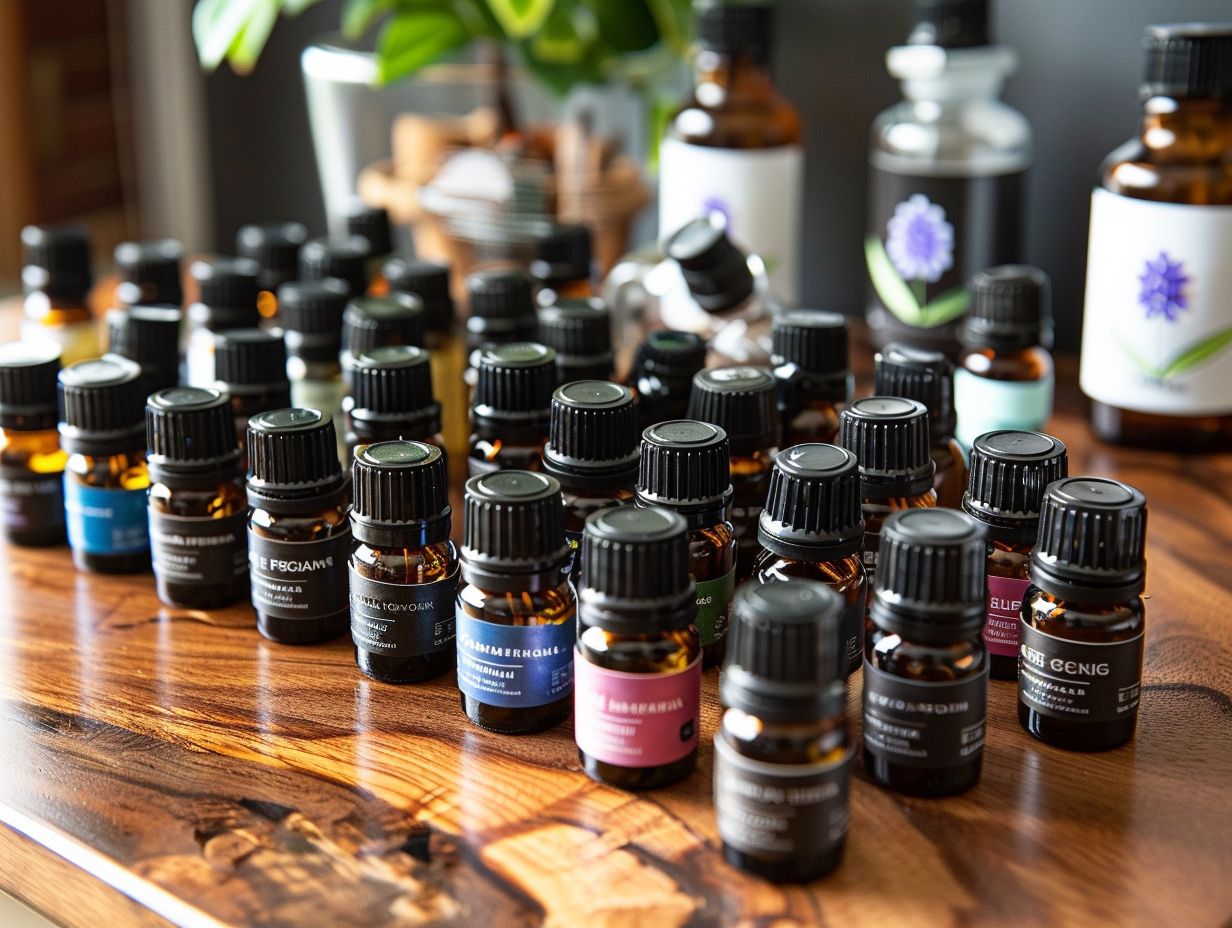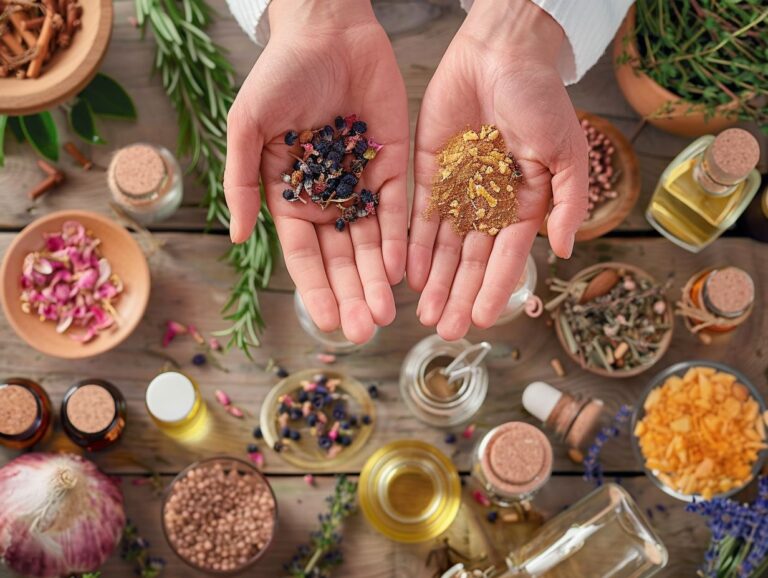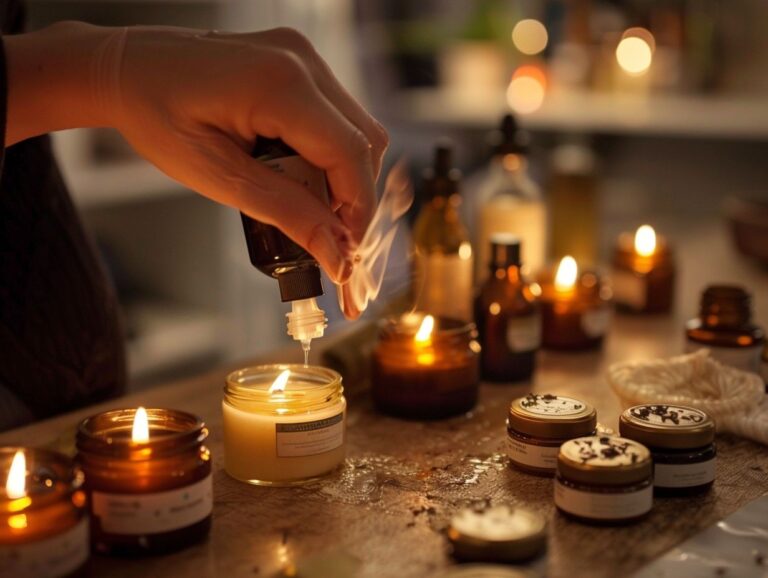Why Are Essential Oils So Expensive
Have you ever wondered why essential oils come with a large price tag? In this article, we will explore the reasons behind the high cost of essential oils, including the high demand, labor-intensive production process, strict quality standards, and limited availability of raw materials. But are expensive essential oils really worth the investment? We will also discuss whether the price reflects the quality of these oils. We will delve into the numerous benefits of using essential oils, from aromatherapy to natural remedies for health issues. We will provide tips on how to safely and effectively use essential oils in your daily life. So, let’s uncover the secrets of essential oils together!
Key Takeaways:
What Are Essential Oils?
Essential oils are natural extracts derived from plants, capturing the essence, fragrance, and beneficial properties of botanicals through a meticulous extraction process.
These oils have a rich history dating back to ancient civilizations where they were prized for their healing and aromatic qualities. Typically extracted through methods like distillation or cold pressing, essential oils retain the concentrated scent and therapeutic benefits of the plants they are derived from. From lavender for relaxation to tea tree for its antiseptic properties, each oil offers a unique set of benefits that cater to various needs. People incorporate essential oils into their daily routines through aromatherapy, skincare products, massage oils, and even household cleaners, utilizing the strength of nature to enhance well-being.
How Are Essential Oils Made?
The process of making essential oils involves distillation or pressing of plant material to extract the pure essence, ensuring the preservation of the botanical’s natural properties and purity.
Distillation is a common method used in essential oil production, where plant material is heated to release aromatic compounds, which are then condensed to form the final oil. Steam distillation is particularly popular, as it allows for the extraction of oils without overheating them.
- Steam passes through the plant material, carrying the essential oils with it.
- The steam is then cooled, causing it to condense into water and oil.
It is crucial to maintain proper temperatures and pressures during distillation to preserve the integrity and effectiveness of the essential oils.
Why Are Essential Oils So Expensive?
The pricing of essential oils is influenced by various factors, including the quality of botanicals used, the rarity of certain plants, the production costs, and the distinction between high-quality oils and cheaper alternatives.
In terms of essential oils, quality is paramount. The way in which botanicals are sourced, cultivated, and distilled plays a crucial role in determining the final product’s price tag. Rare plants can significantly drive up costs, as their scarcity makes them harder to obtain. The production process itself, including extraction methods and distillation techniques, can impact the overall cost of the oil. Consumers often find themselves faced with a choice between lower-priced oils, which may lack the purity and potency of their higher-priced counterparts.
High Demand
The high demand for essential oils in various industries like aromatherapy, skincare, and wellness contributes to the market growth, prompting increased production to meet consumer needs.
With the rise in consumer awareness regarding the benefits of natural products, the essential oil market has witnessed a significant surge in demand over recent years. This surge is not only driven by individuals seeking holistic wellness solutions but also by the beauty and personal care industry incorporating these oils into their products due to the growing preference for organic and sustainable ingredients.
Labor-Intensive Production
The labor-intensive process of harvesting and distilling essential oils requires significant human effort and expertise, contributing to the overall production costs and the value of the final product.
Harvesting essential oils typically involves meticulous attention to detail, with workers carefully plucking delicate flowers or leaves by hand to ensure the highest quality yield. This painstaking process demands patience and precision as each plant’s optimal harvesting time must be timed perfectly. Once harvested, the distillation process further showcases the expertise of skilled workers who carefully monitor temperature and pressure levels to extract the purest essence from the plant material.
High Quality Standards

Maintaining high quality standards in essential oil production involves rigorous testing, purity assessments, and adherence to industry benchmarks, ensuring the delivery of pure and potent products to consumers.
For producers in the essential oil industry, quality assurance is a cornerstone of their operations. Quality standards are not just essential for meeting regulatory requirements but also for building trust with consumers. Through meticulous testing protocols, such as gas chromatography and mass spectrometry, producers can verify the purity and composition of their oils. These tests help identify any contaminants or adulterants, ensuring that the final product is of the highest quality. By committing to these rigorous standards, producers demonstrate their dedication to providing safe and effective essential oils to their customers.
Limited Availability of Raw Materials
The limited availability of specific raw materials for essential oil production, coupled with factors like seasonal growth and varying yields, can contribute to the scarcity and higher prices of certain oils.
For instance, some essential oils, such as rose or sandalwood, require a significant amount of plant material to produce just a small quantity of oil, making them particularly vulnerable to supply chain disruptions. The challenge intensifies when factors like climate change or pests affect plant growth, leading to even lower yields. This results in increased competition among buyers, driving prices up, and making it harder for producers to maintain consistent quality and pricing for their products.
Are Expensive Essential Oils Better Quality?
While expensive essential oils are often associated with higher quality due to meticulous sourcing, testing, and purity standards, it is essential to assess each product based on its individual characteristics and production methods.
One common misconception is that the price tag of an essential oil directly correlates with its effectiveness and purity.
This is not always the case. Factors like the plant species used, extraction methods, and whether synthetic additives are included play a crucial role in determining the quality of the oil.
Price should not be the sole indicator of an essential oil’s quality.
Knowledge of reputable brands, certifications like USDA Organic or GC/MS testing results, and understanding proper dilution and usage methods are essential in making an informed choice.
What Are the Benefits of Using Essential Oils?
The benefits of using essential oils are diverse, ranging from aromatherapy and natural remedies for health issues to household cleaning and personal care applications, offering a holistic approach to well-being.
Essential oils have been used for centuries for their therapeutic properties, providing relief from stress, anxiety, and even headaches. They are not only great for improving mental health, but also for physical well-being, aiding in digestion, skin health, and respiratory function.
The antiseptic and antibacterial qualities of certain essential oils make them excellent for homemade cleaning products that are both effective and environmentally friendly. From freshening the air to supporting immune health, the versatility of essential oils is truly remarkable.
Aromatherapy
Aromatherapy, the practice of using essential oils to promote physical and psychological well-being through scent and fragrance, harnesses the natural essence and therapeutic properties of botanical oils.
Essential oils are derived from plants, flowers, and herbs, each carrying distinct aromatic compounds that interact with the body through inhalation or topical application. These oils are known for their diverse therapeutic benefits; they can help alleviate stress, anxiety, and even improve sleep quality. The methodical blending of oils creates unique aromas that can uplift spirits, enhance focus, or create a sense of calm. Aromatherapy is a holistic approach that taps into the power of nature to support mental and emotional well-being.
Natural Remedies for Health Issues
Essential oils serve as natural remedies for various health issues, leveraging the healing properties of plants and botanical extracts to address common ailments and promote overall well-being.
One of the key attributes of essential oils is their plant-based healing properties, which have been utilized for centuries in traditional medicine systems worldwide. These concentrated oils extracted from flowers, herbs, and trees contain compounds that offer a range of therapeutic benefits, from soothing inflammation and alleviating stress to boosting immunity and enhancing mental clarity. To learn why essential oils are affordable, click here.
When used in holistic medicine practices, essential oils are often applied topically, inhaled, or ingested in controlled amounts to harness their healing potential. By incorporating essential oils into your daily routine, you can support your body’s natural ability to heal and maintain its balance, contributing to a healthier and more vibrant life.
Household Cleaning and Personal Care

In terms of household cleaning, essential oils act as powerful natural disinfectants, deodorizers, and cleaners. Their antimicrobial properties make them excellent choices for eliminating germs and bacteria without the harsh chemicals found in many conventional cleaners. From freshening up kitchens with citrus scents to purifying bathrooms with tea tree oil, there’s a wide range of essential oils to suit various cleaning needs.
In personal care, essential oils play a crucial role in promoting skin and hair health. They can be used in skincare routines to address issues like acne, aging, and inflammation, while also nourishing and moisturizing the skin. For hair care, essential oils help improve scalp health, stimulate hair growth, and add shine and fragrance to hair products. Custom blends of essential oils can provide unique benefits, such as promoting relaxation, boosting energy, or uplifting the mood, making them versatile additions to any wellness routine.
How to Use Essential Oils Safely and Effectively?
Using essential oils safely and effectively requires proper dilution, avoidance of synthetic fillers, and the use of carrier oils to ensure skin safety and optimal absorption, following recommended guidelines for application and testing for sensitivities.
When diluting essential oils, it is crucial to follow the recommended ratios to prevent skin irritation or adverse reactions. Carrier oils, such as jojoba, coconut, or almond oil, are ideal choices for dilution as they help ‘carry’ the essential oil onto the skin without causing irritation.
To test for skin sensitivity, always perform a patch test by mixing a small amount of diluted essential oil and applying it to a small area of skin. Wait 24 hours to check for any adverse reactions before full application.
When applying essential oils, ensure to avoid sensitive areas like the eyes, mucous membranes, and broken skin, and always consult a healthcare professional if pregnant, nursing, or on medication.
Dilute Properly
Properly diluting essential oils with carrier oils like jojoba or grape seed oil is essential to prevent skin irritation and maximize the efficacy of the oils during application.
When using essential oils, it’s crucial to remember that these concentrated plant extracts can be potent and may cause skin sensitivities if not diluted properly. Carrier oils, such as jojoba and grape seed oil, play a vital role in this dilution process by helping to reduce the concentration of the essential oil while also providing additional benefits for the skin. To learn about the most expensive essential oils, click here.
Jojoba oil is particularly beneficial due to its similarities to the skin’s natural oils, making it a great choice for all skin types. On the other hand, grape seed oil is lightweight and easily absorbed, making it ideal for facial applications.
By diluting essential oils with these carrier oils, you not only minimize the risk of skin irritation but also enhance the absorption of the oils into the skin, allowing for better therapeutic effects.
Patch Test Before Use
Conducting a patch test before full application of essential oils helps identify potential skin sensitivities or allergic reactions, ensuring safe usage and minimizing adverse skin responses.
When performing a patch test, it is crucial to select a small area of skin, preferably on the arm or behind the ear, and apply a diluted form of the essential oil. This test area should then be covered with a bandage for 24-48 hours while observing any signs of redness, itching, or irritation.
Considering individual variations in skin types, regular skin assessments are essential to detect any changes such as dryness, eczema, or dermatitis. Early identification of adverse reactions can prevent further complications and promote a personalized approach to skincare.
Follow Recommended Dosages
Adhering to recommended dosages and application guidelines for essential oils ensures optimal efficacy, safety, and purity, providing users with the best outcomes while minimizing risks of overuse or adverse effects.
It is crucial to understand that essential oils are highly concentrated plant extracts, and hence, proper dilution is essential to prevent skin irritation or other adverse reactions. Whether using them topically, aromatically, or internally, it is important to follow specific blending ratios and application methods recommended for each oil. Ensuring the source and quality of the essential oils used is vital to experience their full benefits. Look for oils that are pure, organic, and therapeutic grade, free from additives, chemicals, or synthetic fragrances.
Store Properly
Proper storage of essential oils, including protecting them from light, heat, and moisture, is crucial to preserving their quality, potency, and purity over time, reflecting a commitment to maintaining product integrity.
Light exposure can lead to oxidation and degradation of the delicate compounds present in essential oils, ultimately reducing their therapeutic benefits and aromatic qualities. By storing oils in dark, amber or cobalt glass bottles and keeping them away from direct sunlight, you can help extend their shelf life.
Temperature control is equally important as heat can accelerate the chemical reactions within oils, leading to changes in fragrance and potentially rendering them less effective. It is recommended to store oils in a cool, dark place, ideally below 77 F (25 C), to maintain their stability.
Humidity levels should be monitored to prevent moisture from seeping into the containers and causing the oils to degrade or become contaminated. Using proper seals and ensuring a dry storage environment can help safeguard the purity and longevity of your essential oils.
Frequently Asked Questions
Why Are Essential Oils So Expensive?
Essential oils are natural, concentrated plant extracts that are used for various health and wellness purposes. They are known for their therapeutic properties, but often come with a hefty price tag. This raises the question, why are essential oils so expensive?
What Is the Process of Making Essential Oils?
Essential oils are typically extracted from plants through a process called steam distillation. This involves using steam to break down the plant’s cells and release its oils. It is a time-consuming and labor-intensive process, which contributes to the high cost of essential oils.
Why Do Some Essential Oils Cost More Than Others?
The cost of essential oils can vary greatly depending on the plant it is extracted from. Some plants, such as roses and jasmine, have a very low oil yield, making them more expensive. Additionally, some plants are only grown in certain regions of the world, which can also impact the cost.
Are There Cheaper Alternatives to Essential Oils?
While there are cheaper options for essential oils, such as synthetic or diluted versions, these may not provide the same therapeutic benefits as pure, high-quality essential oils. It is important to do research and purchase from reputable brands to ensure you are getting a quality product.
Do Essential Oils Expire?
Yes, essential oils do have a shelf life and can eventually expire. This is due to their volatile nature, meaning they can evaporate over time. To ensure the longevity of your essential oils, store them in a cool, dark place and use them within 2-3 years of purchase.
Can I Make My Own Essential Oils to Save Money?
While it is possible to make your own essential oils at home, the process requires a significant amount of time, resources, and knowledge. It is not a cost-effective option, especially when considering the amount of plant material needed to produce a small amount of oil. It is often more affordable to purchase essential oils from a reputable source.









2 Comments